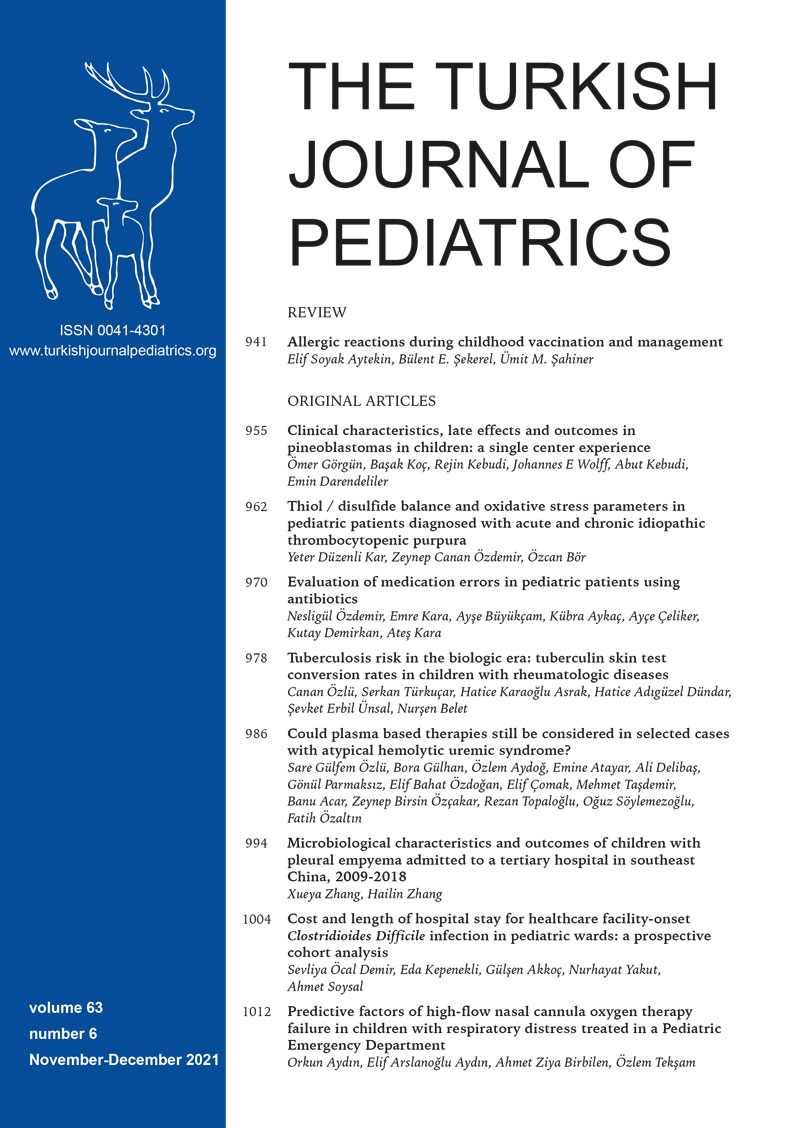Abstract
Background. Clostridioides difficile (C. difficile) is a well-known causative agent of healthcare associated infection, it increases medical cost besides increasing morbidity and mortality. This study was conducted to determine the incidence, and economic burden of healthcare facility-onset C. difficile infection (HO-CDI) in children.
Methods. Data was acquired with a prospective cohort study conducted in pediatric wards of a tertiary university hospital between August 2015 to August 2016. The HO-CDI was defined as diarrhea that began after 48 hours of admission with a positive cytotoxic stool assay for the presence of toxin A and/or B of C. difficile.
Results. In the 3172 admissions in one year, 212 (7%) healthcare associated diarrhea (HAD) episodes were observed, in 25 (12%) of them C. difficile was identified in which 6 (25%) cases < 2-year-old. The incidence of HOCDI was estimated as 8.8/10,000 patient-days. Cases with HO-CDI (n=19) were compared with cases with non- CDI-HAD (n=102); the presence of one of the risk factors for CDI increased the risk for HO-CDI (5,05; 95% Cl: 1.10-23.05; P 0,037), the median length of stay (LOS) attributable HO-CDI was 7 days (IQR,5-10) per admission, whereas for non-CDI-HAD was 2 days (IQR,0-4) (p=0.036). General hospitalization costs in the two groups were similar, specifically estimated costs attributable to HO-CDI and non-CID-HAD were $294.0 and $137.0 per hospitalization respectively (p= < 0.0001).
Conclusion. Although in children the incidence of HO-CDI is increasing, its clinical manifestation is still milder and effective infection control measures with antibiotic stewardship can limit related morbidly, mortality, LOS, and cost.
Keywords: C. difficile, HO-CDI, cost, health-care, pediatric













